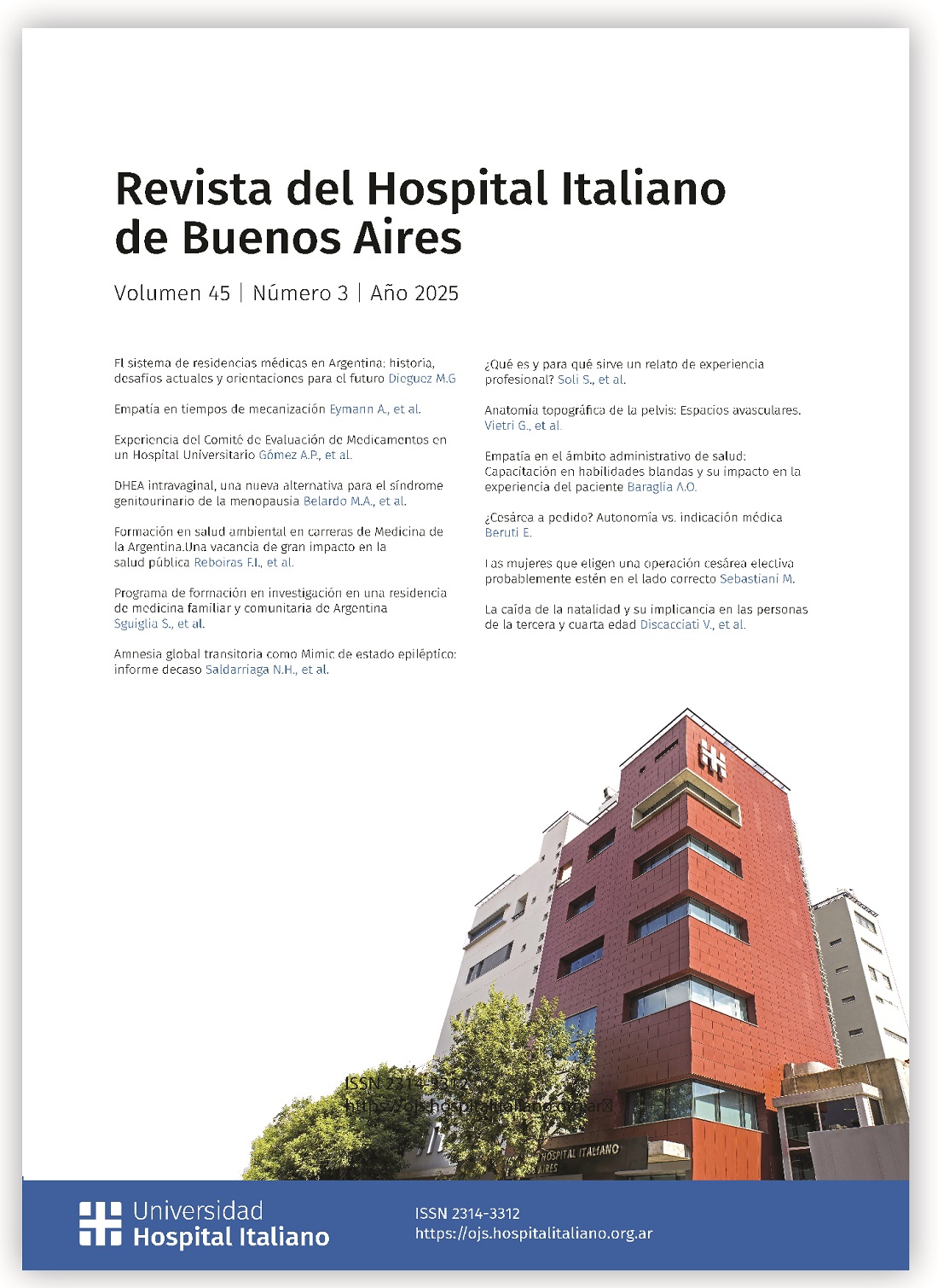DHEA intravaginal, una nueva alternativa para el síndrome genitourinario de la menopausia
Contenido principal del artículo
Resumen
Introducción: la menopausia, una etapa natural en la vida de las mujeres, provoca cambios hormonales que pueden afectar la salud, especialmente el tracto genitourinario, lo que da lugar al síndrome genitourinario de la menopausia (SGM). Este síndrome se caracteriza por síntomas genitales y urinarios y disfunción sexual. A pesar de su alta prevalencia, muchas mujeres no buscan tratamiento adecuado debido a la falta de información o el estigma asociado a estos síntomas. Sin embargo, opciones terapéuticas como la deshidroepiandrosterona (DHEA) o prasterona intravaginal (prasterona 6,5 mg) han mostrado ser eficaces para tratar los síntomas del SGM.
Estado del arte: la DHEA se convierte localmente en andrógenos y estrógenos en la mucosa vaginal, por intracrinología, lo que mejora la salud vaginal y la función sexual. En estudios clínicos, la DHEA intravaginal ha demostrado reducir la dispareunia, mejorar el pH vaginal, la lubricación y la integridad de la mucosa vaginal. Sus beneficios fueron comparables o incluso superiores a los de otros tratamientos, como los estrógenos vaginales.
La administración de DHEA 0,5% por vía vaginal en mujeres posmenopáusicas mejoró significativamente los síntomas del SGM, con una reducción de la dispareunia y mejoría en la calidad de vida. También se ha demostrado que la DHEA mejora la función sexual en mujeres con bajos niveles de sulfato de
deshidroepiandrosterona (DHEA-S) y testosterona. En cuanto a la seguridad, se observó que no tiene efectos significativos en el endometrio ni produce cambios en los niveles séricos de esteroides.
Conclusión: la DHEA vaginal diaria es tan eficaz como los estrógenos locales. Presenta efectos beneficiosos en la anatomía y fisiología de la atrofia vulvovaginal y todos los síntomas y signos asociados, sin exposición sistémica, de acuerdo con el mecanismo de la intracrinología.
Downloads
Detalles del artículo
Sección

Esta obra está bajo una licencia internacional Creative Commons Atribución-NoComercial-CompartirIgual 4.0.
Cómo citar
Referencias
Kim HK, Kang SY, Chung YJ, et al. The recent review of the genitourinary syndrome of menopause. J Menopausal Med. 2015;21(2):65-71. https://doi.org/10.6118/jmm.2015.21.2.65. DOI: https://doi.org/10.6118/jmm.2015.21.2.65
Nik Hazlina NH, Norhayati MN, Shaiful Bahari I, et al. Prevalence of psychosomatic and genitourinary syndrome among menopausal women: a systematic review and meta-analysis. Front Med (Lausanne). 2022;9:848202. https://doi.org/10.3389/fmed.2022.848202. DOI: https://doi.org/10.3389/fmed.2022.848202
Mili N, Paschou SA, Armeni A, et al. Genitourinary syndrome of menopause: a systematic review on prevalence and treatment. Menopause. 2021;28(6):706-716. https://doi.org/10.1097/GME.0000000000001752. 2. DOI: https://doi.org/10.1097/GME.0000000000001752
Traish AM, Vignozzi L, Simon JA, et al. Role of androgens in female genitourinary tissue structure and function: implications in the genitourinary syndrome of menopause. Sex Med Rev. 2018;6(4):558-571. https://doi.org/10.1016/j.sxmr.2018.03.005. 4. DOI: https://doi.org/10.1016/j.sxmr.2018.03.005
Tang J, Chen LR, Chen KH. The utilization of dehydroepiandrosterone as a sexual hormone precursor in premenopausal and postmenopausal women: an overview. Pharmaceuticals (Basel). 2021;15(1):46. https://doi.org/10.3390/ph15010046. DOI: https://doi.org/10.3390/ph15010046
Labrie F, Archer D, Bouchard C, et al. High internal consistency and efficacy of intravaginal DHEA for vaginal atrophy. Gynecol Endocrinol. 2010;26(7):524-532. https://doi.org/10.3109/09513590903511547. DOI: https://doi.org/10.3109/09513590903511547
Labrie F, Archer DF, Bouchard C, et al. Intravaginal dehydroepiandrosterone (prasterone), a highly efficient treatment of dyspareunia. Climacteric. 2011;14(2):282-288. https://doi.org/10.3109/13697137.2010.535226. DOI: https://doi.org/10.3109/13697137.2010.535226
Labrie F, Archer DF, Koltun W, et al. Efficacy of intravaginal dehydroepiandrosterone (DHEA) on moderate to severe dyspareunia and vaginal dryness, symptoms of vulvovaginal atrophy, and of the genitourinary syndrome of menopause. Menopause. 2018;25(11):1339-1353. https://doi.org/10.1097/GME.0000000000001238. DOI: https://doi.org/10.1097/GME.0000000000001238
Labrie F, Archer DF, Bouchard C, et al. Prasterone has parallel beneficial effects on the main symptoms of vulvovaginal atrophy: 52-week open-label study. Maturitas. 2015;81(1):46-56. https://doi.org/10.1016/j.maturitas.2015.02.005. DOI: https://doi.org/10.1016/j.maturitas.2015.02.005
Sauer U, Talaulikar V, Davies MC. Efficacy of intravaginal dehydroepiandrosterone (DHEA) for symptomatic women in the peri- or postmenopausal phase. Maturitas. 2018;116:79-82. https://doi.org/10.1016/j.maturitas.2018.07.016. DOI: https://doi.org/10.1016/j.maturitas.2018.07.016
Duarte PR, Maroto Martín MT, Mar Martín Moya MD, et al. Quality of life analysis measured with the Cervantes 16 scale in treated menopausal women with genitourinary syndrome. J Comp Eff Res. 2022;11(18):1365-1374. https://doi.org/10.2217/cer-2022-0086. DOI: https://doi.org/10.2217/cer-2022-0086
Bouchard C, Labrie F, Archer DF, et al. Decreased efficacy of twice-weekly intravaginal dehydroepiandrosterone on vulvovaginal atrophy. Climacteric. 2015;18(4):590-607. https://doi.org/10.3109/13697137.2014.992012. DOI: https://doi.org/10.3109/13697137.2014.992012
Ke Y, Gonthier R, Simard JN, et al. Serum steroids remain within the same normal postmenopausal values during 12-month intravaginal 0.50% DHEA. Horm Mol Biol Clin Investig. 2015;24(3):117-129. https://doi.org/10.1515/hmbci-2015-0035. DOI: https://doi.org/10.1515/hmbci-2015-0035
Portman DJ, Labrie F, Archer DF, et al. Lack of effect of intravaginal dehydroepiandrosterone (DHEA, prasterone) on the endometrium in postmenopausal women. Menopause. 2015;22(12):1289-1295. https://doi.org/10.1097/GME.0000000000000470. DOI: https://doi.org/10.1097/GME.0000000000000470
Mension E, Alonso I, Cebrecos I, et al. Safety of prasterone in breast cancer survivors treated with aromatase inhibitors: the VIBRA pilot study. Climacteric. 2022;25(5):476-482. https://doi.org/10.1080/13697137.2022.2050208. DOI: https://doi.org/10.1080/13697137.2022.2050208
Barton DL, Sloan JA, Shuster LT, et al. Evaluating the efficacy of vaginal dehydroepiandosterone for vaginal symptoms in postmenopausal cancer survivors: NCCTG N10C1 (Alliance). Support Care Cancer. 2018;26(2):643-650. https://doi.org/10.1007/s00520-017-3878-2. DOI: https://doi.org/10.1007/s00520-017-3878-2
Barton DL, Shuster LT, Dockter T, et al. Systemic and local effects of vaginal dehydroepiandrosterone (DHEA): NCCTG N10C1 (Alliance). Support Care Cancer. 2018;26(4):1335-1343. https://doi.org/10.1007/s00520-017-3960-9. DOI: https://doi.org/10.1007/s00520-017-3960-9
Bouchard C, Labrie F, Derogatis L,et al. Effect of intravaginal dehydroepiandrosterone (DHEA) on the female sexual function in postmenopausal women: ERC-230 open-label study. Horm Mol Biol Clin Investig. 2016;25(3):181-190. https://doi,org/10.1515/hmbci-2015-0044. DOI: https://doi.org/10.1515/hmbci-2015-0044
Pelletier G, Ouellet J, Martel C, et al. Androgenic action of dehydroepiandrosterone (DHEA) on nerve density in the ovariectomized rat vagina. J Sex Med. 2013;10(8):1908-1914. https://doi.org/10.1111/jsm.12219. DOI: https://doi.org/10.1111/jsm.12219
Matarazzo MG, Sarpietro G, Fiorito D, et al. Intravaginal 6.5 mg prasterone administration in postmenopausal women with overactive bladder syndrome: a pilot study. Eur J Obstet Gynecol Reprod Biol. 2021;263:67-71. https://doi.org/10.1016/j.ejogrb.2021.06.009. DOI: https://doi.org/10.1016/j.ejogrb.2021.06.009
Misasi G, Russo E, Montt Guevara MM, et al. Effects of vaginal DHEA on stress urinary incontinence in postmenopausal women with vulvovaginal atrophy. Maturitas. 2025;196:108232. https://doi.org/10.1016/j.maturitas.2025.108232. DOI: https://doi.org/10.1016/j.maturitas.2025.108232

